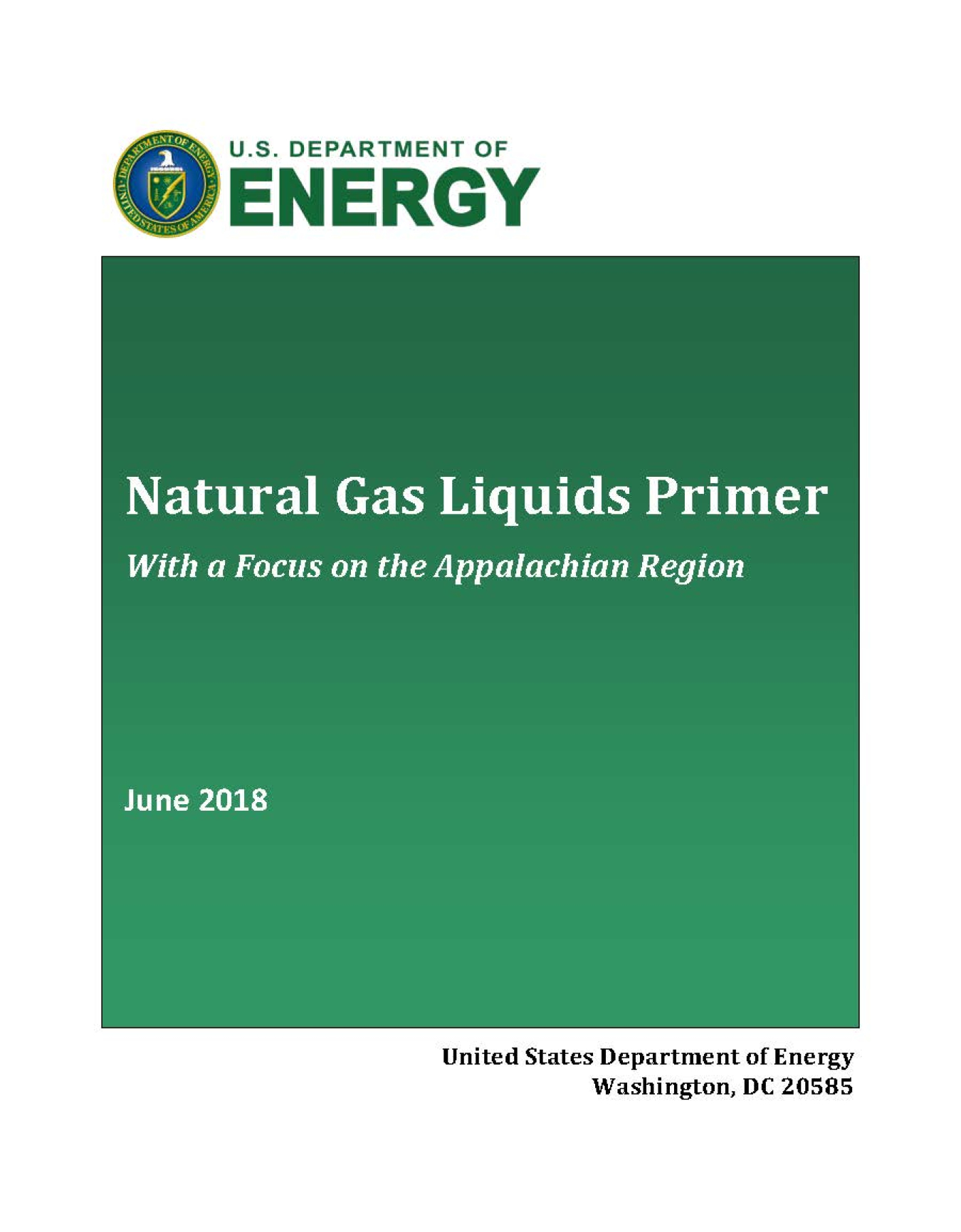The Office of Fossil Energy is pleased to provide this updated version of the Natural Gas Liquids Primer. Since the first publication of the primer in December 2017, the U.S. Energy Information Administration (EIA) published the Annual Energy Outlook 2018 (AEO 2018). Updates included in this June 2018 version of the primer are:
- Updated statistics and projections from AEO 2018 Reference case relevant to natural gas and natural gas liquids;
- Updated statistics and projections from EIA’s Short-Term Energy Outlook published in February 2018;
- Updated information regarding infrastructure developments in the Appalachian region; and
- Identification of research and development opportunities related to natural gas and natural gas liquids production, conversion, and storage.
The ongoing renaissance in oil and natural gas production in the United States has provided economic benefits across the country through higher employment and lower energy prices. The growth of production has occurred in regions of the country with significant resources in shale formations, which are unlocked through unconventional production techniques. One such region is Appalachia with the Marcellus and Utica shale formations.
The Appalachian region has experienced near-exponential growth in natural gas production, and that production is expected to increase for decades to come. The natural gas produced in Appalachia contains valuable resources in the form of natural gas liquids (NGLs), including ethane and propane. When separated from the natural gas stream, ethane and propane are key feedstocks for the petrochemical industry to produce compounds for making plastics.
Leaders across the Appalachian region have identified the potential economic opportunity these significant NGL resources present. To contribute to this dialogue, the U.S. Department of Energy (DOE) created this primer to educate the public on NGLs – what they are, how they are used, recent market developments, and the supporting infrastructure in the region. This document includes the most recent information from DOE and EIA on Appalachian NGL supply, demand, and infrastructure.

